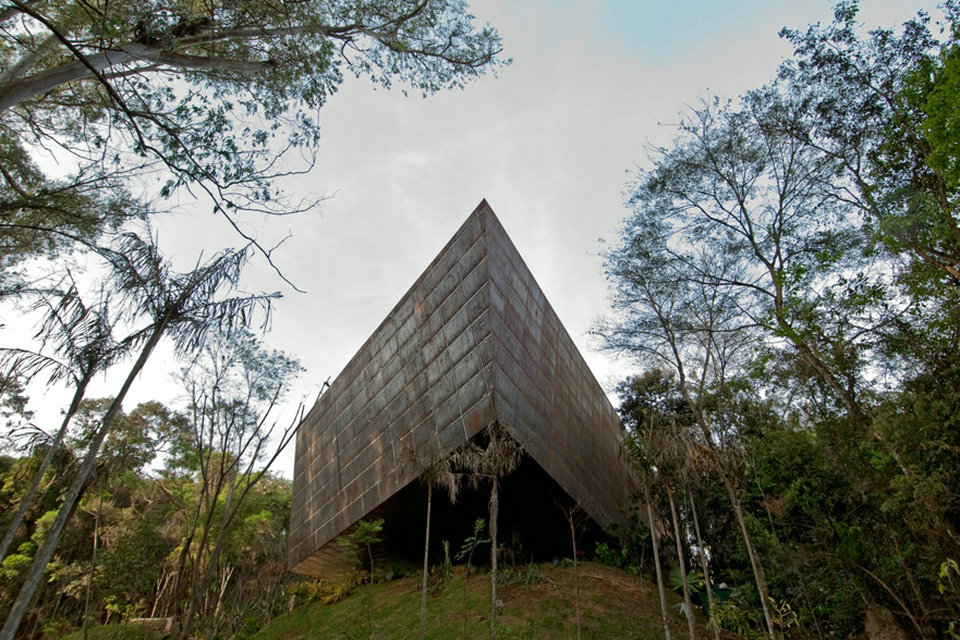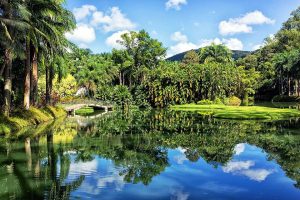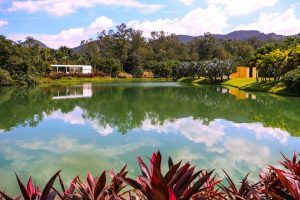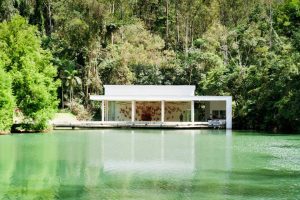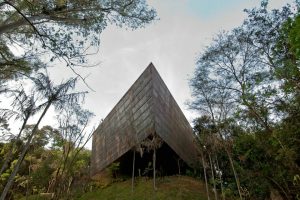Result of a long collaboration process between Inhotim and the artist, the Pavilhão Miguel Rio Branco was built in the last two years to house a comprehensive presentation of his production. The assembled works present the photographic image on different supports, such as individual photos, polyptychs, panels, film, audiovisual and multimedia installations, offering a large multifocal collage of the artist’s work, framed by a bold architectural project. The works include images produced in the last 30 years, from his initial series, such as Maciel (1979), held in Pelourinho, in Salvador, to his most recent installations, in which his research meets the spatial impulse of contemporary art.
Biography
Miguel Rio Branco (Las Palmas, 11 of December of 1946) is an artist and multidsiciplinar photographer Brazilian.
His father was a diplomat and, during his childhood, lived in Portugal, Switzerland, Brazil and the United States. In 1966, he studied at the Photography Institute of New York and, in 1968, at the School of Industrial Design in Rio de Janeiro. He started dedicating himself to painting and, in 1974, he held an exhibition of his paintings in Bern, since he resided in Switzerland. He also collaborated in cinematographic productions, mainly as a cinematographer.
He began to collaborate with the Magnum agency in 1980 and, in 1982, he became a correspondent, not even becoming a member.
Beginning with the 1983 Bienal de São Paulo, he began to make space installations combining photographs and music, looking for a kind of “documentary poetry”.
Departing from images taken in 1979 at Pelourinho, in Salvador, he made a short film entitled Nothing I will take when I die, those that I owe will collect in hell that the author considers a “poetic documentary.
In 1985 he published the book Doce Suor Amargo that takes life in the historic center of the city of Salvador, which was abandoned. Other published books are Nakta in 1996, Silent book in 1997, Miguel Rio Branco in 1998, Pele do Tempo in 1999, Gritos Surdos e Entre os Olhos, or Deserto in 2002 and Plaisir a douleur in 2005.
Contemporary art
The Inhotim Institute houses a museum complex with a series of pavilions and galleries with works of art and sculptures exposed outdoors. The emergence of Inhotim on the scene of Brazilian cultural institutions has been marked, from the beginning, the mission of creating an artistic collection and defining museological strategies that enable the community to access cultural goods. In this sense, it is about bringing the public closer to a relevant set of works, produced by artists from different parts of the world, reflecting in a current way on contemporary issues.
Inhotim is the only Brazilian institution that continuously exhibits a collection of international excellence in contemporary art.
Thanks to a series of specific contexts, Inhotim offers a new model far from that of urban museums. Inhotim’s experience is largely associated with the development of a spatial relationship between art and nature, which allows artists to create and exhibit their works in unique conditions. The viewer is invited to visit gardens, landscapes of forests and rural environments, getting lost among lakes, trails, mountains and valleys, establishing an active experience of the space.
New projects are opened periodically, including works created site-specific for the site and monographic and thematic clippings from the collection, making Inhotim a place in continuous transformation.
Inhotim Institute
Instituto Inhotim is located in Brumadinho, 60 kilometers (37 miles) from Belo Horizonte, the capital of the state of Minas Gerais, and the third largest metropolitan area in Brazil. Inhotim features an internationally relevant art collection, located within 140 hectares (346 acres) of forests and botanical gardens.
The institution emerged in 2004 to house the collection of Bernardo Paz, a businessman in the mining and steel industry, who was married to Rio de Janeiro artist Adriana Varejão, and 20 years ago began to dispose of his valuable collection of modernist art, which included works by Portinari, Guignard and Di Cavalcanti, to form the collection of contemporary art that is now in Inhotim. In 2014, the open air museum was elected, by the TripAdvisor website, one of the 25 museums in the world best rated by users.
Besides the galleries dedicated to solo presentations of artist and the permanent outdoor works, the galleries Fonte, Lago, Mata, Praça and Galpão house temporary exhibitions drawn from the growing contemporary art collection which now consists of more than 700 works by 200 artists from different countries around the world. By collaborating with artists in commissioning new works and adapting existing ones to new spaces, Inhotim’s artistic projects have dealt with landscape and nature, and have accumulated an impressive grouping of large-scale works. Having arisen from a private garden, Inhotim has developed an intensive line of work aimed at the preservation and development of vegetation and botanical research, pursuing new ways to preserve the biodiversity of the surrounding region and Brazil.
Alongside its cultural role, activity that has qualified the institute as a civil-society organization of public interest (OSCIP). In 2010 the institution received the official title of Botanical Garden by the Comissão Nacional de Jardins Botânicos. The exuberant botanical collection is shown in the institution’s gardens contains about 5,000 species of plants, many of them threatened with extinction.
